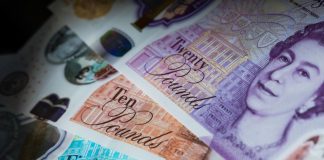A 9% rally by the dollar over the past two weeks ended on Friday after major central banks stepped up their dollar injection facilities to cope with a global scramble for funding.
But Monday’s trading brought a collapse in stock markets, raising concern that central bank actions were not enough.
“The result is that the banking system simply doesn’t have enough dollars to lend to everyone who wants to borrow them … For now, it seems that the demand for the U.S. dollar is insatiable,” said Marshall Gittler, head of investment research at BDSwiss Group.
Against a basket of other currencies, the dollar rose 0.2% to 102.82 after falling as much as 0.7% earlier, up nearly 1% from Asian lows. On Friday, it hit a January 2017 high of 102.99.
Also fuelling the dollar’s rise was a turnaround in dollar positions among hedge funds to a net short from an overall long bet, according to latest positioning data. That raised speculation that the dollar’s rally could be partly explained by short covering by traders.
Legislators in Washington were unable to pass U.S. stimulus measures on Sunday as Republicans and Democrats tussled over a proposed $1 trillion spending package, stoking disquiet about the dollar’s gains, analysts said the majority of investors preferred to hold cash.
“We’ve moved from risk-off to a phase where major players are competing with each other for the safety of holding dollars in cash,” said Yukio Ishizuki, FX strategist at Daiwa Securities in Tokyo. “There are still a lot of investors who need to sell riskier assets, and they want to hold their money in dollars.”
Against the yen, the U.S. currency bounced between gains and losses. It last traded down 0.6% at 110.07. Versus the Swiss franc, the dollar fell 0.2% to 0.98 francs as the Swiss central bank increase foreign currency interventions to their highest since the Brexit referendum in 2016.
The dollar initially rose against the euro to the strongest since April 2017, then pared gains to trade 0.2% lower at $1.0636 per euro.
The dollar also closed in on multi-year highs against the Australian and New Zealand dollars as the economic costs of self-isolation triggered the largest intraday decline ever in New Zealand shares.





























